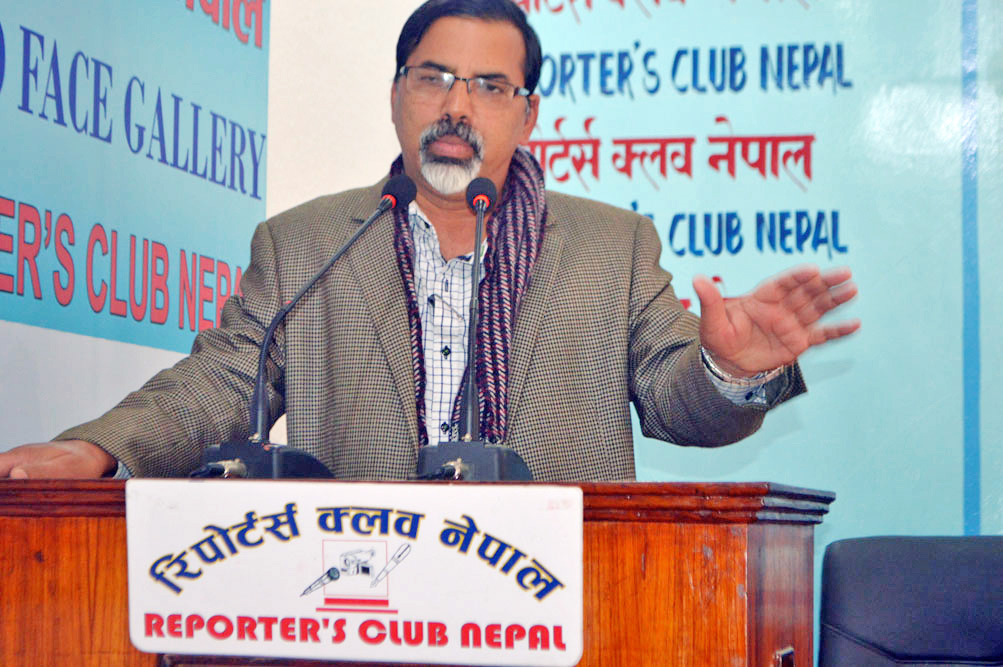‘Increasing power consumption major challenge for NEA’
Kathmandu, April 17
Minister for Energy Janardan Sharma today said that the country no longer faces unpredictable electricity supply and the major challenge for the Nepal Electricity Authority (NEA) now is to increase power consumption.
Minister Sharma made the statement based on the assumption that the 456-megawatt Upper Tamakoshi Hydroelectricity Project, 30-megawatt Chameliya, 14-megawatt Kulekhani III and 200 megawatts generated by the independent power producers would be added to the central grid by next year.
During an interaction with private sector representatives, Energy Minister Sharma urged them to expand industries and businesses citing the power utility will be able to supply adequate energy for the industrial sector as well.
“Erratic supply of power used to be the major constraint for investment and productive capacity enhancement,” said Minister Sharma, adding, “The country has overcome the worst and we have witnessed improvement in productivity from this fiscal by ensuring reliable supply of power.”
Minister Sharma claimed that the economy benefited from the initiative of making the country load-shedding-free.
“Reliable supply of electricity has played an enormous role in boosting productivity and the country is going to witness a higher economic growth after a long time,” said Binayak Shah, general secretary of Hotel Association Nepal, representing the private
sector.
“Consistent supply of electricity from the beginning of this fiscal in major economic hubs — Kathmandu, Pokhara and Bharatpur — has played a significant role in propelling the economy towards higher growth trajectory.”
The government has already announced that the whole country has become load-shedding-free from Nepali New Year 2074 BS.
Minister Sharma further said that as the government has envisioned generating 10,000 megawatts in next 10 years, the electricity consumption must rise simultaneously along with increased generation. As per Sharma, electricity consumption should increase to at least 1,000 units from around 150 units at present by 2022 to improve the quality of life of people.
The targeted generation is a must for Nepal to achieve the goal of graduating to the league of developing country by 2022 and to be a middle-income country by 2030, as per the minister.
Kulman Ghising, managing director of the NEA, said that the power utility has given high priority to strengthening the transmission and distribution system eyeing the future demand of electricity.






